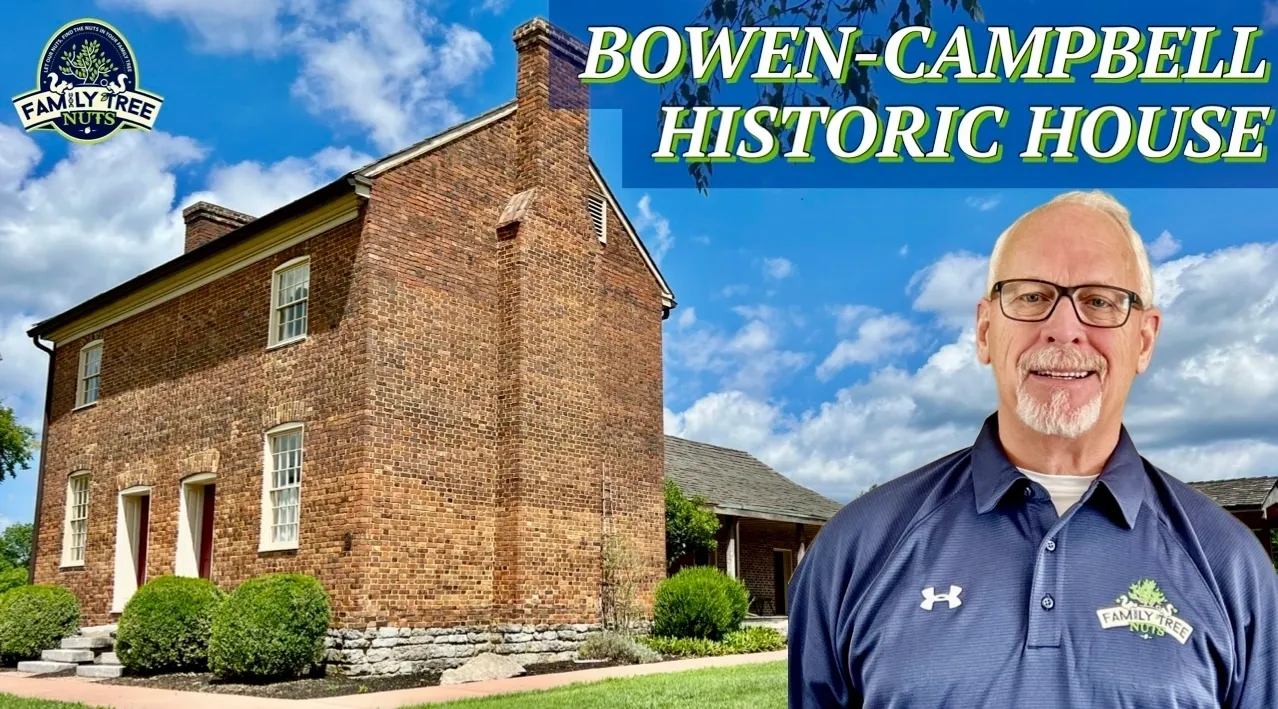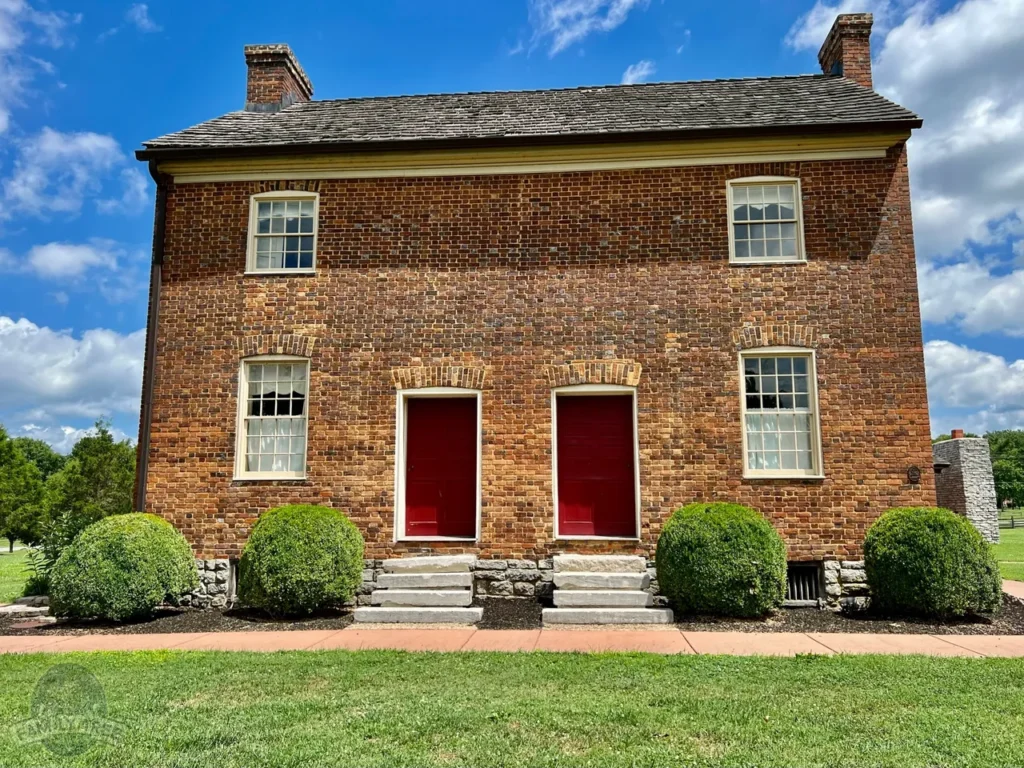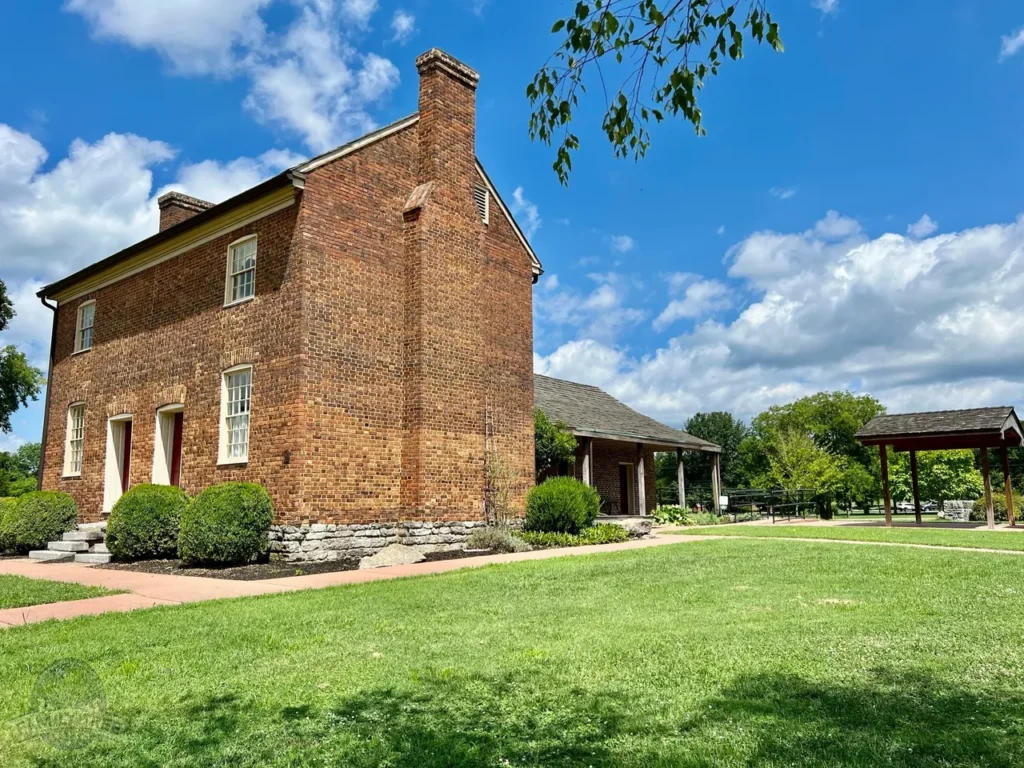
OLDEST BRICK HOME IN MID-TN, HISTORIC BOWEN-CAMPBELL HOUSE
Captain William Bowen was born in 1742 in Fincastle County Virginia. He fought against the Shawnee and Mingo tribes in Lord Dunmore’s War, and also fought in the Continental Line in the American Revolution. He later came to the Cumberland Settlements to start a new life.

Recently we visited The Campbell-Bowen House, in Goodlettesville, Tennessee, and I want to tell you about one of Middle Tennessee’s first settler groups, the William Bowen family. Shortly after the Revolutionary War, Colonial Virginia had begun to run out of new land to purchase and when Bowen sold the plantation that he had inherited from his father, he financed an expedition into a new frontier called, the Cumberland Settlements which were in the region of present-day Nashville Tennessee.
Bowen brought his wife, Mary Henley Russell-Bowen, the daughter of General William Russell, and several of his friends that served in the Continental Army, to scout the region for new homesteads. They traveled down a wilderness trail called the Kentucky Trace, with their families to build a new life and it was here where he built his home and it is still standing today.
In the 1760s and 1770s there were numerous Longhunters who came down from modern day Kentucky, and also across the Cumberland Plateau from East Tennessee to hunt and trap for furs in the new frontier known as the Cumberland Country. In light of the rich soil and good hunting grounds; it wasn’t long before they and thousands of others came here to settle permanently. The new pioneers had settled on the hunting grounds that were claimed by the local Chickamauga, and were attacked on a regular basis. The Bowens did what everyone else did when there were Indians in the area; they left their home and flocked to the protection of the local fort which was always close by to their homesteads. The Bowen home was about a mile away from Mansker Station.

When the settlers arrived the first log cabins were constructed rapidly after the timber was cut. The Bowen family built a two-story double log cabin with a traditional dog trot in between. After about 3 years, in 1787 the Bowen family began construction on a new brick home which was considered to be a mansion in those early days, especially since most in the community were still living in their frontier log homes and needing the protection of the station close by.
Bowens original claim of 640 acres grew into a 4,032-acre estate and the family wanted to be able to live more comfortably even on the frontier. Their brick house is one of the very first brick houses in the area of present-day Middle Tennessee. The house is open for tours and includes some original items that the family owned. The house gives you a better understanding what it was like to live in the western frontier in the late 1700s. It was built in a simple design, with the original structure being two rooms downstairs and two rooms upstairs. The Bowens had 6 children and there were separate rooms upstairs for the girls and boys.
Today the Bowen-Campbell House is completely restored and sits in Moss-Wright Park in Goodlettsville, Tennessee and along with a realistic replica of the Mansker Station Fort, one of the first Cumberland Settlements. The fort was originally located about a mile from the Bowen home. Shortly after the threat of Native American attacks had subsided, new communities sprang up all over the area and they grew into the Nashville, Tennessee, and its suburbs.
We are proud to bring you this history of the Bowen Home, one of the oldest brick structures built on the Cumberland frontier. This house and family played a big part in the early history of the area. Be sure to see our video below from here.
-Scott Denney, Historian, Family Tree Nuts
